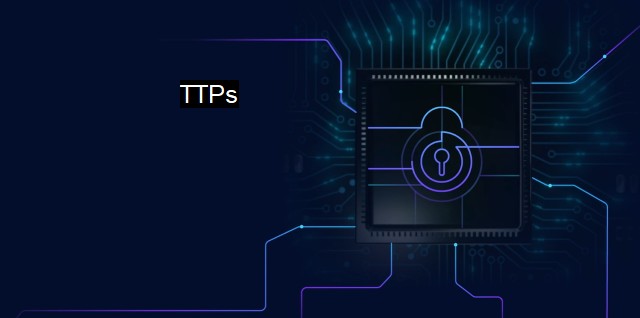What are TTPs?
Exploring Tactics, Techniques, and Procedures in Cybersecurity and Antivirus: A Look into the Evolving Landscape of Malicious Activities and Defense Mechanisms
Tactics, Techniques, and Procedures, better known as TTPs, are essential components of cybersecurity. They represent a comprehensive and foundational approach to understanding, analyzing, and mitigating potential cyber threats.Identifying the TTPs of a potential intruder can give corporations and cybersecurity professionals the advantage they need to deter attacks. In fact, TTPs represent a significant part of the controller’s processes in avalanche protection. Understanding them helps to foresee an attacker's moves, respond accordingly and, when possible, anticipate cybersecurity incidents.
Let's delve deeper into what these three elements —Tactics, Techniques, and Procedures— mean in the realm of cybersecurity. Tactics refer to the overarching goals or objectives that an attacker seeks to accomplish. it could be stealing confidential data, installing malicious software, or causing a service disruption. It describes 'why' an attacker is trying to compromise a system.
Techniques refer to the ways in which the attacker tries to accomplish this goal. It answers the question 'how' the attacker plans to carry out the attack. Examples include spear phishing (sending fraud emails from a known or trusted sender to induce targeted individuals to reveal confidential information), ransomware attacks (where malware is used to encrypt files on the victim's device and then demands ransom in return for the decryption key), or DDoS attacks (flooding a server or network with large volumes of traffic to cause a service outage).
Procedures, on the other hand, refer to the specific step by step actions taken by the attacker to deploy the technique. procedures explain 'what' steps the attacker precisely follows which may include reconnaissance stage where they identify vulnerabilities, weaponization where they create malware specifically designed to exploit identified vulnerabilities, delivery where they deliver the malicious product to the target, and exploitation where the vulnerability is finally exploited.
The context of TTPs is specially necessary when developing antivirus systems. Antivirus software traditionally operates by maintaining an extensive database of known malware signatures and scanning the system for matching signatures. But cyber attacks have become more sophisticated, and attackers keep evolving and changing their tactics, making traditional mechanism insufficient. Here is where TTPs-centered approaches come into play, known as behaviour-based detection techniques. Instead of only looking at malware signatures, this approach focuses on recognizing patterns in the behavior of programs or users that are indicative of a cyber attack.
Appling TTPs in antivirus programs allows for the identification and blocking of suspicious behavior before the execution of an attack, making the protected systems significantly more resilient against cyber threats. It means Instead of responding after an attack has already happened, modern antivirus software can act proactively, which is considerably more effective.
TTPs not only help in ensuring robust antivirus protection but also in enhancing overall cybersecurity maturity. For instance, TTP frameworks guide organizations to understand the modus operandi of potential hackers, prepare defence mechanisms, train staff, and incorporate security controls to protect their digital assets. Understanding TTPs can also aid in making informed cybersecurity strategic decisions, prioritizing resource allocation, risk management – all contributing to creating a cyber-resilient organization.
In the grand scheme of cybersecurity, TTPs can be the thin line between defeat and victory. As hacking strategies evolve unforgettably sophisticated, validating TTPs’ importance becomes an ever more critical task. For as long as everyone from independent users to big corporations continue to venture into the digital world, TTPs will remain as one of the pillars of cyber defense, wherein the realms of antivirus security and beyond.

TTPs FAQs
What is ttps in cybersecurity and antivirus?
In cybersecurity and antivirus, ttps or tactics, techniques, and procedures refer to methods, tools, and processes used by threat actors or cybercriminals to carry out cyberattacks.What is the importance of understanding ttps in cybersecurity and antivirus?
Understanding ttps is essential in cybersecurity and antivirus as it helps security professionals develop effective strategies to prevent, detect, and respond to cyberattacks. By knowing the methods, tools, and processes used by threat actors, security teams can better anticipate and mitigate potential cyber threats.What are some examples of ttps in cybersecurity and antivirus?
Examples of ttps used in cybersecurity and antivirus include social engineering, phishing, malware, ransomware, botnets, distributed denial of service (DDoS) attacks, and man-in-the-middle (MITM) attacks.How can security professionals stay updated on ttps in cybersecurity and antivirus?
Security professionals can stay updated on ttps in cybersecurity and antivirus by attending cybersecurity conferences, reading relevant research papers and reports, participating in online communities and forums, and collaborating with peers and industry leaders. Continuous learning and sharing of knowledge and best practices are critical in keeping up with the evolving cybersecurity landscape.| | A | | | B | | | C | | | D | | | E | | | F | | | G | | | H | | | I | | | J | | | K | | | L | | | M | |
| | N | | | O | | | P | | | Q | | | R | | | S | | | T | | | U | | | V | | | W | | | X | | | Y | | | Z | |
| | 1 | | | 2 | | | 3 | | | 4 | | | 7 | | | 8 | | |||||||